CAR
Essential Elements to Selecting the Perfect Car

Choosing the perfect car can be a daunting task, with countless options and factors to consider. Whether you’re a first-time car buyer or looking to upgrade, the process involves careful consideration of your needs, preferences, and budget. In this guide, we’ll explore the essential elements to consider when selecting the perfect car.
Understanding Your Needs
Before diving into the sea of options, it’s crucial to understand your specific needs. Are you looking for a family car, a daily commuter, or something for weekend adventures?
Daily Commute: For those who primarily use their car for daily commutes, fuel efficiency and comfort are key factors. Look for models with good mileage and comfortable interiors.
Family Car: Families need space, safety, and reliability. Consider SUVs or minivans with ample seating, cargo space, and advanced safety features.
Adventure Vehicle: If you enjoy road trips or off-road adventures, an SUV or crossover with all-wheel drive and robust performance might be your best bet.
Setting a Budget
Your budget will significantly influence your choices. It’s essential to establish a clear budget, including potential financing options, insurance costs, and maintenance expenses.
New vs. Used: Decide whether you want to buy a new car or a used one. New cars come with the latest features and warranties but are more expensive. Used cars are more affordable but may require more maintenance.
Financing: If you plan to finance your car, shop around for the best interest rates and loan terms. Remember to factor in monthly payments into your budget.
Total Cost of Ownership: Consider the total cost of ownership, which includes fuel, insurance, maintenance, and depreciation.
Research and Reviews
Thorough research is essential in making an informed decision. Utilise online resources, customer reviews, and professional evaluations to gather information about different models. Let’s dive into a specific example with a BYD dolphin review.
BYD Dolphin Review
The BYD Dolphin is a notable contender in the electric vehicle (EV) market. Here’s an overview of what makes this model stand out:
Design and Comfort: The BYD Dolphin features a sleek, modern design with a spacious and comfortable interior. It offers ample legroom and a well-designed dashboard.
Performance: This EV boasts impressive acceleration and smooth handling. Its electric motor provides a quiet and efficient driving experience, making it ideal for city commuting.
Range and Charging: With a respectable range on a single charge, the BYD Dolphin is suitable for daily commuting and short trips. Charging is convenient, with options for home charging stations and public chargers.
Technology and Features: The BYD Dolphin comes equipped with advanced technology, including a user-friendly infotainment system, connectivity features, and a suite of safety aids.
Price and Value: Priced competitively, the BYD Dolphin offers excellent value for money, especially considering the savings on fuel and maintenance typical of EVs.
Test Drives and Inspections
Once you’ve narrowed down your options, it’s time to get a feel for the cars. Test drives and inspections are crucial steps in the selection process.
Test Drive: Schedule test drives for the models you’re interested in. Pay attention to the comfort, handling, noise levels, and overall driving experience. Test drives can reveal a lot about how well the car suits your preferences.
Inspection: For used cars, a thorough inspection is essential. Consider hiring a trusted mechanic to check for any potential issues. Look for signs of wear and tear, maintenance history, and any previous accidents.
Evaluating Safety Features
Safety should always be a top priority when selecting a car. Modern vehicles come with a range of safety features designed to protect you and your passengers.
Standard Safety Features: Ensure the car has basic safety features such as airbags, anti-lock brakes (ABS), and stability control.
Advanced Safety Features: Look for advanced safety technologies like lane departure warnings, adaptive cruise control, automatic emergency braking, and blind-spot monitoring.
Safety Ratings: Check the safety ratings from reputable organizations like the National Highway Traffic Safety Administration (NHTSA) and the Insurance Institute for Highway Safety (IIHS).
Considering Resale Value
While it might not be the first thing on your mind, considering the resale value of your car is important. Some cars depreciate faster than others, impacting their long-term value.
Brand Reputation: Brands known for reliability, such as Toyota and Honda, tend to retain their value better.
Market Demand: Certain models are more popular in the used car market, ensuring higher resale value.
Maintenance: Regular maintenance and keeping the car in good condition will help maintain its value over time.
Conclusion
Selecting the perfect car involves a combination of understanding your needs, setting a budget, conducting thorough research, and evaluating safety and performance. By following these steps and considering reviews, you can make an informed decision that will serve you well for years to come. Remember, the perfect car is not just about aesthetics or performance; it’s about finding a vehicle that fits seamlessly into your lifestyle and meets your expectations. Happy car hunting!
CAR
Faqvehicle .com – Your Ultimate Guide to Automotive Answers and Vehicle Know-How
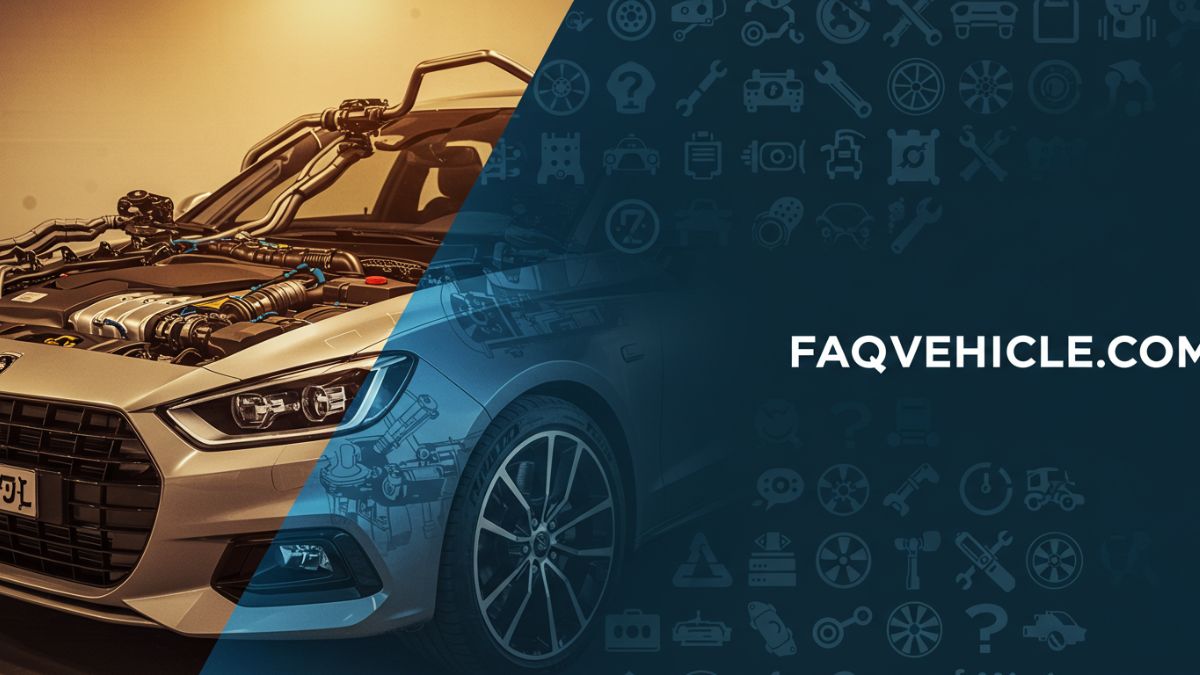
In the digital age, finding reliable automotive information can be overwhelming. With thousands of sources offering conflicting advice, vehicle owners are often left confused. That’s where faqvehicle .com steps in. This website is designed to be a one-stop solution for automotive questions. Whether you’re curious about routine maintenance, urgent repairs, or vehicle documentation, faqvehicles .com offers well-researched and easy-to-understand guidance.
What is faqvehicle .com?
faqvehicle .com is an online platform dedicated to helping car owners, mechanics, and auto enthusiasts by providing frequently asked questions and detailed answers about cars, trucks, and other vehicles. It simplifies automotive concepts for people with little or no mechanical background and delivers reliable information from credible sources.
From understanding dashboard warning lights to learning how to change your car battery, faqvehicle covers it all with clarity and precision.
Key Sections on faqvehicle .com
Let’s explore the main content categories that make faqvehicle .com so valuable.
1. Vehicle Maintenance Advice
Proper car maintenance ensures safety and prolongs vehicle lifespan. On faqvehicle, you’ll find maintenance tips such as:
-
How often to change your oil
-
When to rotate your tires
-
Signs of brake wear
-
Seasonal maintenance checklists
These articles help you take preventive steps rather than dealing with costly repairs later.
2. Troubleshooting and Repairs
Car troubles can happen anytime, and many people don’t know where to start. faqvehicle .com simplifies troubleshooting with beginner-friendly guides like:
-
What does the check engine light mean?
-
How to identify a dead battery
-
Diagnosing unusual engine sounds
-
Fixes for common air conditioning problems
Each topic provides step-by-step instructions and tips to either solve the issue yourself or know what to expect at a repair shop.
3. Buying, Selling, and Leasing Tips
Navigating the car market can be tricky. Whether you’re buying a new ride or selling your old one, faqvehicle provides advice on:
-
Evaluating used vehicles
-
Tips for negotiating a car deal
-
Understanding lease agreements
-
Preparing your car for resale
With this information, users can make smart, informed decisions and avoid common mistakes.
Why Choose faqvehicle .com?
There are many car websites out there, but faqvehicle .com stands out due to its unique approach to automotive education.
a. Plain Language, Real Answers
Unlike technical manuals filled with jargon, faqvehicle breaks down complex automotive issues into plain English. Each article answers common questions clearly, so you never feel lost.
b. Regularly Updated Information
The auto industry changes rapidly with new technologies and updated regulations. faqvehicle .com keeps its content fresh and relevant, ensuring readers get the latest and most accurate information available.
c. Free and Accessible
There’s no need to sign up, pay a fee, or download an app. faqvehicle is 100% free and accessible from any device, making it perfect for quick checks on the go or in your garage.
Who Should Use faqvehicle .com?
The platform is tailored for a broad audience:
-
New drivers who need guidance on basic car care
-
Car owners looking for quick answers to everyday problems
-
DIY enthusiasts working on vehicle projects at home
-
Students and learners in automotive training
-
Professionals needing a reliable reference tool
No matter your skill level, faqvehicle offers valuable insights.
Popular Topics on faqvehicle .com
Here are some of the most-read articles you might find helpful:
-
“How to Reset Your Car’s Maintenance Light”
-
“Top 10 Signs You Need a New Transmission”
-
“How to Jumpstart a Car Safely”
-
“Understanding Tire Pressure Monitoring Systems (TPMS)”
-
“What to Do When Your Car Overheats”
Each guide is structured with bullet points, images, and links to related questions, making your experience smooth and informative.
How faqvehicle .com Builds Trust
In an industry where misinformation can be dangerous or expensive, faqvehicle .com places a strong emphasis on credibility. Articles are reviewed by certified automotive professionals, and sources are cited where needed. The goal isn’t just to inform—it’s to empower readers to take confident action.
Community Engagement and Support
Although it’s an informational site, faqvehicle .com values its users’ input. You can:
-
Comment on articles
-
Submit new questions
-
Request new topics
-
Share your experiences
This two-way interaction helps improve the content and build a helpful automotive community.
The Future of faqvehicle .com
As vehicles become more advanced, faqvehicle .com plans to grow alongside the industry. Some upcoming developments include:
-
EV (electric vehicle) support guides
-
Mobile optimization improvements
-
Video tutorials for visual learners
-
Expanded database for motorcycles and RVs
The site is evolving to meet the needs of all vehicle owners—from gas to hybrid to fully electric.
Conclusion
Whether you’re facing a flat tire, confused by a dashboard symbol, or simply looking to learn more about your vehicle, faqvehicle .com is an indispensable tool. Its simple design, accurate information, and accessible language make it the go-to platform for car-related questions.
In a world where automotive issues can quickly become overwhelming, having a reliable resource like faqvehicle at your fingertips can save time, money, and frustration. Bookmark the site today and drive smarter tomorrow.
CAR
Buying a Used Car? Here’s How to Score the Best Deal in Canada

Your trusty car has finally given out. After years of loyal service, countless road trips, and maybe even some minor mishaps, it’s officially retired—never to spin its wheels again.
Now, you’re in the market for a replacement. You need something reliable, but you’re not looking to spend a fortune on a brand-new model. A used car makes the most sense for your budget, and you’re willing to take on the risks that come with buying pre-owned; as long as you can guarantee you’re getting a good deal.
How do you avoid buying a car that’s more trouble than it’s worth?
Choose the Right Dealership
You’ll want to find a reputable dealership with positive customer reviews and plenty of awards. For example, Autorama has been named the winner of the Top Choice Award for nine consecutive years. It has been recognized as one of Canada’s “Most Recommended” car loan providers by Finder and The AutoTrader Best Priced Dealer Award. As you can see, this is an excellent place to shop for used cars and get a great deal.
What else can you look for? Credentials. When looking for dealerships in Ontario, check for these key credentials:
- The OMVIC Registration (Ontario Motor Vehicle Industry Council) is mandatory for all dealerships in Ontario. OMVIC regulates the motor vehicle sales industry to ensure fair business practices and protect consumers.
- The UCDA Membership (Used Car Dealers Association of Ontario) is another indicator of trustworthiness. The UCDA represents more than 5,000 dealers in Ontario, ensuring they follow ethical practices and provide full disclosure to buyers. While membership is voluntary, it’s a good sign that a dealership is reputable.
Checking for these credentials helps you avoid scams, overpriced vehicles, and unreliable sellers, ensuring you’re getting a fair deal.
Thinking of Buying from a Private Seller? Think Twice
Yes, you can technically buy a used car from a private seller, and at first glance, the price might seem more affordable. But is it really a good deal?
When you buy from a private seller, there’s no way to confirm the car’s full history. Even if they provide a vehicle history report, there’s no warranty, financing, or return policy. Additionally, private sellers are not legally required to offer the same consumer protections as registered dealerships.
At a dealership, you get:
- Certified vehicle inspections
- Warranties for added protection
- Financing options to fit your budget
- Customer service support
With a private seller, you’re on your own. If something goes wrong, there’s no one to help.
Short-Term Savings vs. Long-Term Value
It’s tempting to go for the cheapest option, but a low price doesn’t always mean a good deal. A car that’s barely holding on might save you money upfront, but you’ll spend much more on repairs and maintenance. Worse yet, you could find yourself back in the market for another car sooner than expected. Instead of going for the lowest price, invest in quality.
Drive Away with Confidence
By following these tips, you can walk into a dealership with confidence, knowing exactly what to look for and what to avoid. As you pull out of the dealership in your brand-new not-so-new car, you’ll feel amazing, knowing you made the right choice.
CAR
Top Benefits of Auto Towel Seat Covers for Your Vehicle
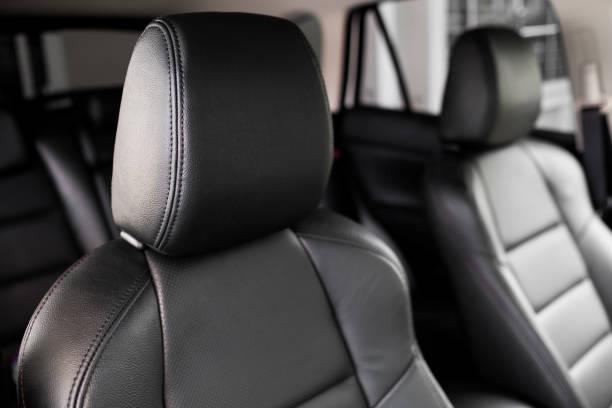
Introduction
Auto towel seat covers are a versatile and practical option for car owners who want to protect their vehicle seats while also adding comfort and style. Unlike other materials, towel seat covers offer unique benefits that make them particularly appealing. These covers are designed to fit over your car seats to protect them from spills, dirt, and damage.
Why Choose Towel Seat Covers for Your Car?
Towel seat covers are a favorite among car owners for several reasons:
Material Benefits:
- These covers are made from absorbent materials, which can effectively manage moisture and spills. This makes them ideal for use after sports activities or beach trips.
- Towel car seat covers are easy to put on and take off, which means you can wash and reuse them effortlessly. This flexibility is unmatched by many other types of seat covers.
- These covers are generally more affordable than their leather or fabric counterparts while being available in a range of styles and colors to match personal tastes.
For additional insights on auto towel seat cover materials, visit a poll on Reddit.
Protection for Your Car Seats:
Auto towel seat covers are not only stylish, but they also serve an essential function, protecting your car seats from damage. Let’s explore how these covers can be your vehicle’s best friend.
- Guard Against Spills and Stains: Everyday mishaps like coffee spills or crumbs from snacks can leave lasting marks on your seats. Auto towel seat covers act as a barrier, keeping your original car seats clean and safe from permanent stains.
- Prevent Wear and Tear: Over time, regular use can lead to wearing out the original fabric or leather of your car seats. A car seat towel cover helps preserve the integrity of your seats by providing an extra layer of protection.
- Cost Savings: By using car seat towel covers, you protect your seats from wear and accidental damage, potentially saving on costly repairs or replacements. Keeping your car seats in good condition can also maintain or even boost your vehicle’s resale value.
Comfort and Convenience of Car Seat Cover Towels
Car seat cover towels offer more than just protection; they enhance your driving experience by adding comfort and convenience.
- Breathability and Softness: One key advantage of towel seat covers is their breathability. They allow air to circulate, preventing that sticky feeling you often get with other materials, especially during hot weather. Plus, the softness adds an extra comfort layer on long drives.
- Easy Maintenance: The cleaning is a breeze with car seat cover towels. Most are machine washable, making it easy to keep them fresh and clean without much fuss. Simply remove them, toss them in the washer, and they’re ready to go again.
Auto towel seat covers bring a combination of protection, comfort, and ease to your driving experience. Whether you’re aiming to extend the life of your car’s interior or simply looking for a cost-effective way to enhance comfort, these covers are a smart choice.
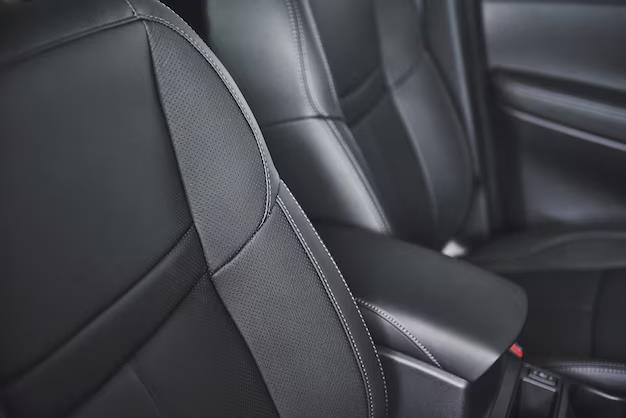
Enhancing Style with Auto Seat Towels
Auto seat towels are not just practical, they can also breathe new life into your vehicle’s interior. Here’s how towel car seat covers can enhance the style of your car:
- Variety of Colors and Designs: Auto seat towels come in a wide range of hues and patterns that can match the personality and preferences of any car owner. Whether you prefer bold, bright colors or subtle, muted tones, there’s a design for you.
- Customizable Look: By choosing designs that suit your taste, these covers can help personalize your vehicle. They offer an easy way to change the look of a car without a permanent commitment.
- Easy to Update: If you want to refresh your interior’s style periodically, swapping out auto seat towels can be a simple solution. This adaptability can help keep your vehicle looking updated with current design trends.
Having stylish seat covers can make your driving experience more enjoyable. For high-quality auto towel seat cover selections, consider visiting a reputable brand.
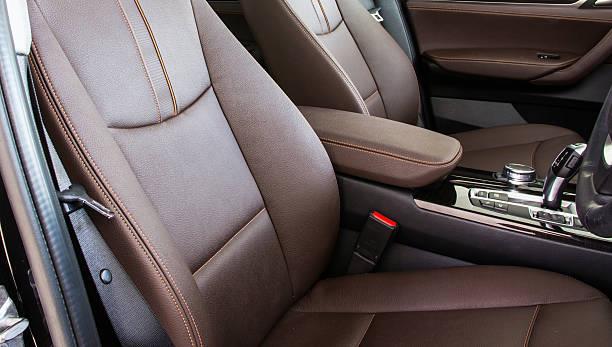
Easy Installation and Versatility
One of the key advantages of towel seat covers is their user-friendly installation and versatility. Here’s what makes them stand out:
- Effortless Installation: Installing towel seat covers is a breeze. They slip on easily over your seats, requiring no special tools or expertise. This feature makes them perfect for busy individuals who need quick solutions.
- Quick Removal: Just as easy to take off, these covers facilitate cleaning and washing without a hassle. You can remove them and wash whenever necessary, keeping your car interior fresh.
- Compatibility with Various Vehicles: Towel seat covers are versatile, designed to fit different types of vehicles from sedans to SUVs. This flexibility ensures they’re a valuable accessory for any type of car owner.
- Versatile Use: These covers can be switched between different cars or even used to protect seats during specific activities (like beach outings or after workouts), adding to their utility.
With their stylish designs and straightforward usability, auto towel seat covers are a smart choice for any vehicle owner looking to enhance both style and functionality.
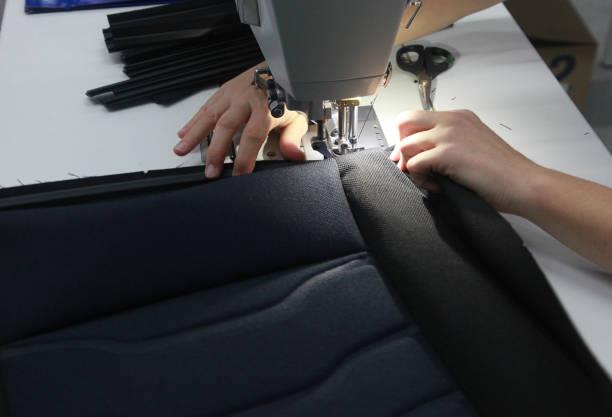
Affordable Car Seat Protection
Choosing towel seat covers offers a budget-friendly solution for protecting your vehicle’s interior. These covers are often more cost-effective compared to other materials, providing great value for money. Here’s why towel car seat covers are a smart choice for cost-conscious drivers:
- Cost-effective Purchase: Towel seat covers are generally less expensive than leather or other premium materials, making them an affordable option.
- Durability: While budget-friendly, these covers are durable and can withstand regular use, providing lasting protection for your seats.
- Savings on Maintenance: By safeguarding the original upholstery, towel seat covers can save you from costly repairs and replacements in the long run.
For additional guidance on auto towel seat covers, check out this helpful guide.
Maintaining Your Auto Towel Seat Covers for Longevity
Proper maintenance of your car seat towel covers ensures they stay in top condition and extend their lifespan. Here are some practical tips to maintain them effectively:
- Regular Cleaning: Wash your towel seat covers routinely to keep them fresh and free from stains.
- Cleaning Methods:
- Hand Wash: Use mild detergent and warm water for a gentle clean, which helps preserve the fabric.
- Machine Wash: If machine washing is recommended, use a gentle cycle setting.
- Air Dry: Always let your covers air dry to prevent shrinkage or damage from heat.
- Avoiding Excessive Sun Exposure: Prolonged sun exposure can fade the material, so it’s advisable to park in shaded areas where possible.
- Inspect Regularly: Periodically check the covers for any wear or tear, and address minor issues promptly.
By following these maintenance practices, you can keep your auto towel seat covers in excellent condition for years to come.
Note: This article adheres to Google’s content guidelines and incorporates external resources and studies to support the provided information.
-

 GENERAL2 years ago
GENERAL2 years agoDiscovering the Artistic Brilliance of Derpixon: A Deep Dive into their Animation and Illustration
-

 Posts2 years ago
Posts2 years agoSiegel, Cooper & Co.
-

 HEALTH2 years ago
HEALTH2 years agoTransformative Health Solutions: Unveiling the Breakthroughs of 10x Health
-

 Lifestyle2 years ago
Lifestyle2 years agoPurenudism.com: Unveiling the Beauty of Naturist Lifestyle
-

 FASHION2 years ago
FASHION2 years agoThe Many Faces of “λιβαισ”: A Comprehensive Guide to its Symbolism in Different Cultures
-

 Lifestyle2 years ago
Lifestyle2 years agoBaddieHub: Unleashing Confidence and Style in the Ultimate Gathering Spot for the Baddie Lifestyle
-

 Entertainment2 years ago
Entertainment2 years agoGeekzilla Podcast: Navigating the World of Pop Culture, Gaming, and Tech
-

 Lifestyle1 year ago
Lifestyle1 year agoSandra orlow: Unraveling the Story of an Iconic Figure
